YIHAYEN – A SYMBOL OF TRADITIONAL CHINESE LINYEN ART
Along with the Great Wall and the Forbidden City, Di Hoa Vien is the top ideal destination if you are planning to travel to China. Built during the Qing Dynasty, the total area of Di Hoa Vien is up to 290 hectares, and the area of this land dates back more than 800 years ago with many constructions and name changes such as under the reign of King Qianlong in 1750. built Thanh Y Vien here as a gift for his mother, Queen Mother Sung Khanh. 138 years later, Queen Mother Tu Hy restored Thanh Y Vien and named it Di Hoa Vien until today.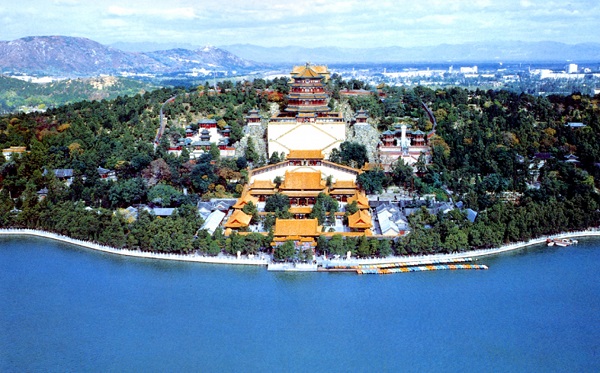
Di Hoa Vien "a garden that nurtures peace" is located about 15km northwest of Beijing. Di Hoa Vien is the most famous work of Chinese art of Lam Vien (royal garden) with the largest scale but still achieving perfect sophistication in terms of strict layered architecture and compliance with regulations. The strictest feng shui laws. Di Hoa Vien is made up of two main areas: Van Tho Mountain and Kunming Lake. The total number of architectural spaces in Di Hoa Vien includes 3,000 spaces and is divided into three main areas: administrative area, living area, and garden for viewing.
Dong Mon area with the main door facing east is the royal administrative and living area. With Nhon Hoa Palace as the center, where Queen Mother Tu Hy and King Quang Tu held court, received guests, and handled court affairs. Along with that, Lac Tho Duong, Lan Ngoc Duong, and Nghi Van Quan create the "four institutes". Lac Tho Duong and Lan Ngoc Duong are the living and living places of Queen Mother Tu Hy, King Quang Tu, the queen and concubines. Nghi Van Quan in particular is a royal theater, one of the three largest theaters of the Qing Dynasty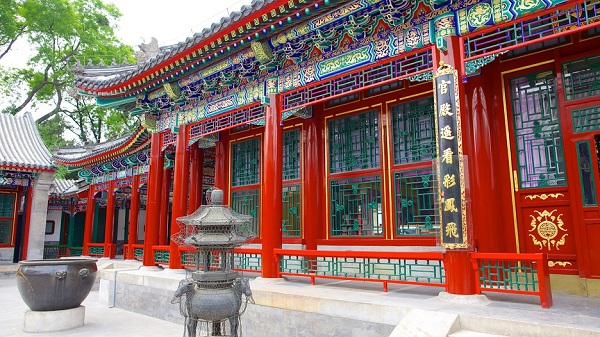
Next is the viewing area that glorifies Chinese garden architecture. As mentioned, the unique layered architecture of Di Hoa Vien starts from the top of Van Tho mountain and descends, you will see Tri Tue Hai, Buddha Perfume guard, Duc Huy palace, Bai Van palace, Bai Van gate, Van Huy Ngoc Vu gate. spread down. The Ngoc Huong tower is one of the most prominent structures of Di Hoa Vien. It is a 3-story, 41m high tower built in an octagonal shape, with 8 large columns. Ngoc Huong Attic is a place to worship Buddha and organize royal worship ceremonies. At the foot of the mountain you will encounter a 728m long corridor called Truong Lang with many different rooms, with more than 8,000 paintings painted on pillars stretching along the corridor.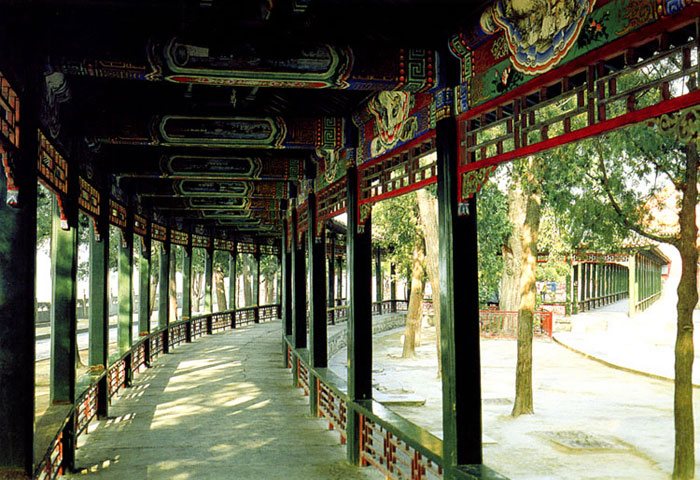
This Truong Lang follows Kunming Lake - a lake with an area of up to 200 hectares and accounts for 3/4 of the area of Di Hoa Vien. In the winter, the frozen lake surface creates a magical scene, and in the summer it is cool. That's why Queen Mother Tu Hy likes to come here in the summer to rest, so Di Hoa Vien also has a name. The other is the Summer Palace. People say that viewed from above, Kunming Lake looks like a large peach with the stem of a river leading water into the lake through the Ximen estuary, north of Di Hoa Vien.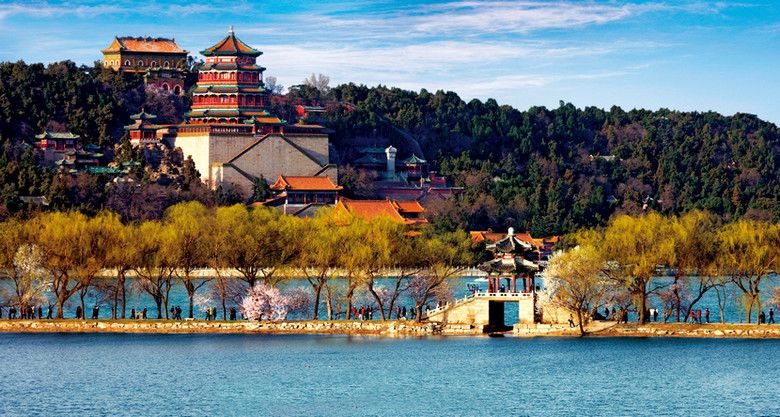 In particular, here you can also see To Chau Road along both banks of the river. The trading road is modeled after the characteristics of Phuong Nam river. King Qianlong wanted his mother to be happy so he built this road with houses and shops on both sides bearing the characteristics of Suzhou, and there were even people pretending to be people, shop owners, and guests. recreates a lifelike shopping scene. They are all eunuchs and maids in the palace. This Suzhou road was actually destroyed, and was restored in 1986.
In particular, here you can also see To Chau Road along both banks of the river. The trading road is modeled after the characteristics of Phuong Nam river. King Qianlong wanted his mother to be happy so he built this road with houses and shops on both sides bearing the characteristics of Suzhou, and there were even people pretending to be people, shop owners, and guests. recreates a lifelike shopping scene. They are all eunuchs and maids in the palace. This Suzhou road was actually destroyed, and was restored in 1986.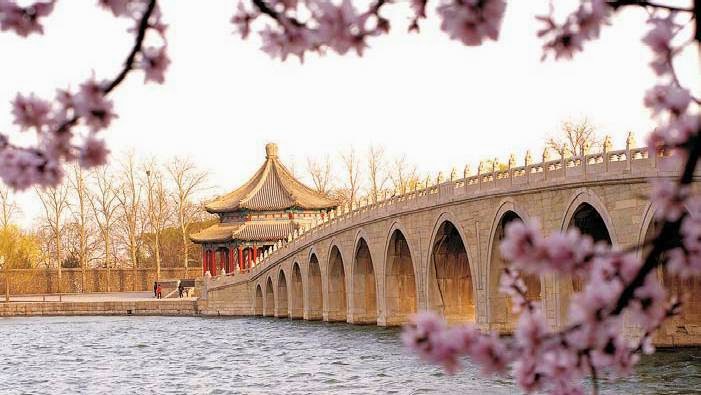 There is also Thap Nhat Khong Bridge, a circular bridge made of stone connecting the two banks of Kunming Lake. The bridge has 17 spans, 150m long, 8m wide, with more than 500 stone lion sculptures with different shapes and expressions on the bridge railing.
There is also Thap Nhat Khong Bridge, a circular bridge made of stone connecting the two banks of Kunming Lake. The bridge has 17 spans, 150m long, 8m wide, with more than 500 stone lion sculptures with different shapes and expressions on the bridge railing.













































